Security Analytics with SAP Focused Run
SAP Focused Run delivers real-time application monitoring, alerting and analytics for large-scale SAP landscapes and hosting providers that need to monitor customer SAP installations from a central platform. It leverages the power of SAP HANA to support centralized monitoring for thousands of systems in high-volume environments. Focused Run is intended to complement SAP Solution Manager in SAP landscapes by substituting configuration, integration, system, and user monitoring scenarios from SolMan. However, Solution Manager is required for all other scenarios including change management, patch management, custom code management, business process monitoring, service management, and test management.
This article explores the capabilities of the Advanced Configuration Monitoring (ACM) scenario in Focused Run. Scenarios such as Advanced Event and Alert Management (AEM), Advanced Integration Monitoring (AIM) and Advanced User Monitoring (AUM) will be discussed in later posts. ACM includes Configuration and Security Analytics (CSA), accessed from the Fiori launchpad of Focused Run. CSA enables SAP users to analyze the configuration of applications, databases and hosts and automate audits for security compliance. The following short video from SAP provides a quick introduction to CSA: Advanced Configuration Monitoring

CSA analyzes configuration data collected and transferred via the Simple Diagnostics Agent (SDA) from SAP systems. Focused Run does not include a built-in Business Warehouse (BW). Therefore, unlike Solution Manager, configuration data is stored in HANA database tables starting with CCDB_DATA_ rather than BW InfoCubes. This simplifies the architecture and improves the performance for configuration analysis. The tables are read by the Configuration and Change Database (CCDB). Configuration changes are tracked to support change and trend analysis. This includes changes to security-relevant parameters, services, RFC destinations, and user privileges. The CCDB contains snapshots of SAP systems. The configuration data is structured in containers known as config stores. The stores can be updated every hour to maintain up-to-date snapshots of SAP systems. The stores can be queried using the search option in CSA. The config store below displays the current values for all profile parameters in system FR1.
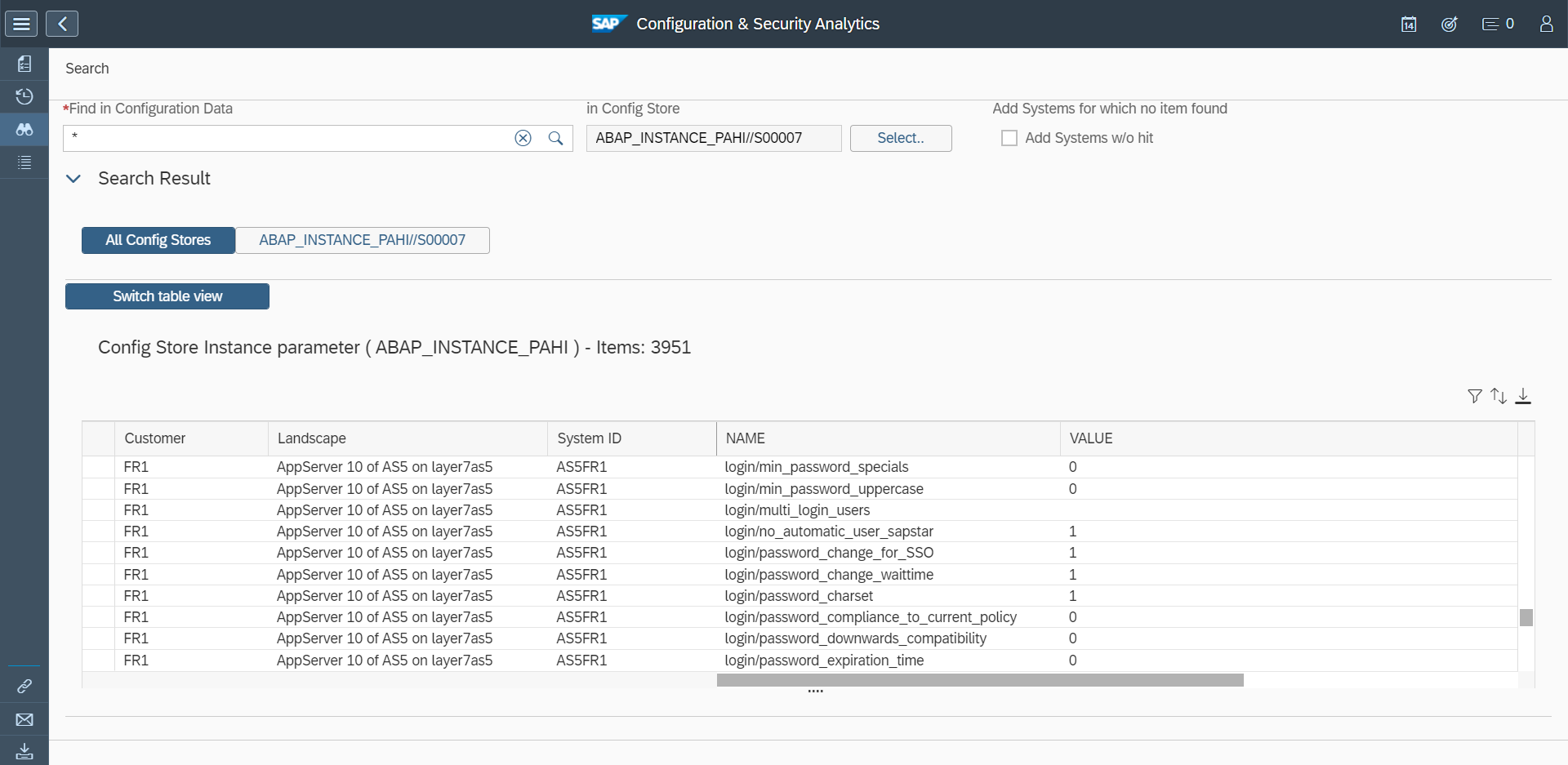
The following store contains details of user assigned critical profiles. User related stores can be customized to extract details for specific profiles, roles, user types, authorizations, and combinations of roles and authorizations.
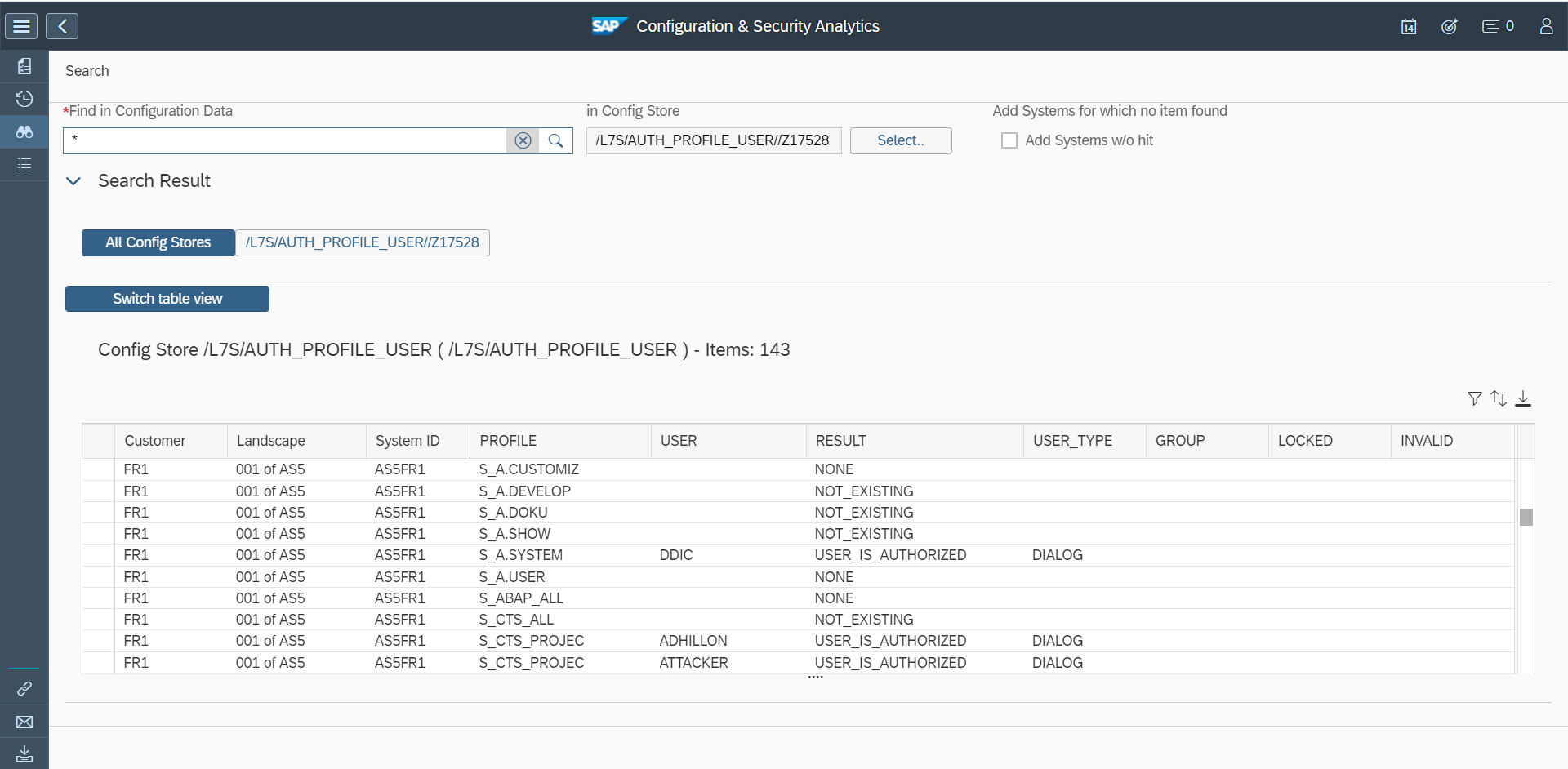
CSA can be used to configure and apply policies that analyze config stores to audit systems and automate compliance checks. Policy Maintenance in CSA enables users to create XML policies. Policies can also be converted from target systems in Configuration Validation from SAP Solution Manager. Policies can be exported and imported as XML files or transported between Focused Run installations. SAP recommends limiting the number of checks in single policies to 100 to restrict the number of SQL statements. However, single policies can be combined into composite policies to execute thousands of checks in parallel. In the example below, the composite policy ABAP Parameters includes multiple single policies for reviewing security-relevant parameters in ABAP systems.
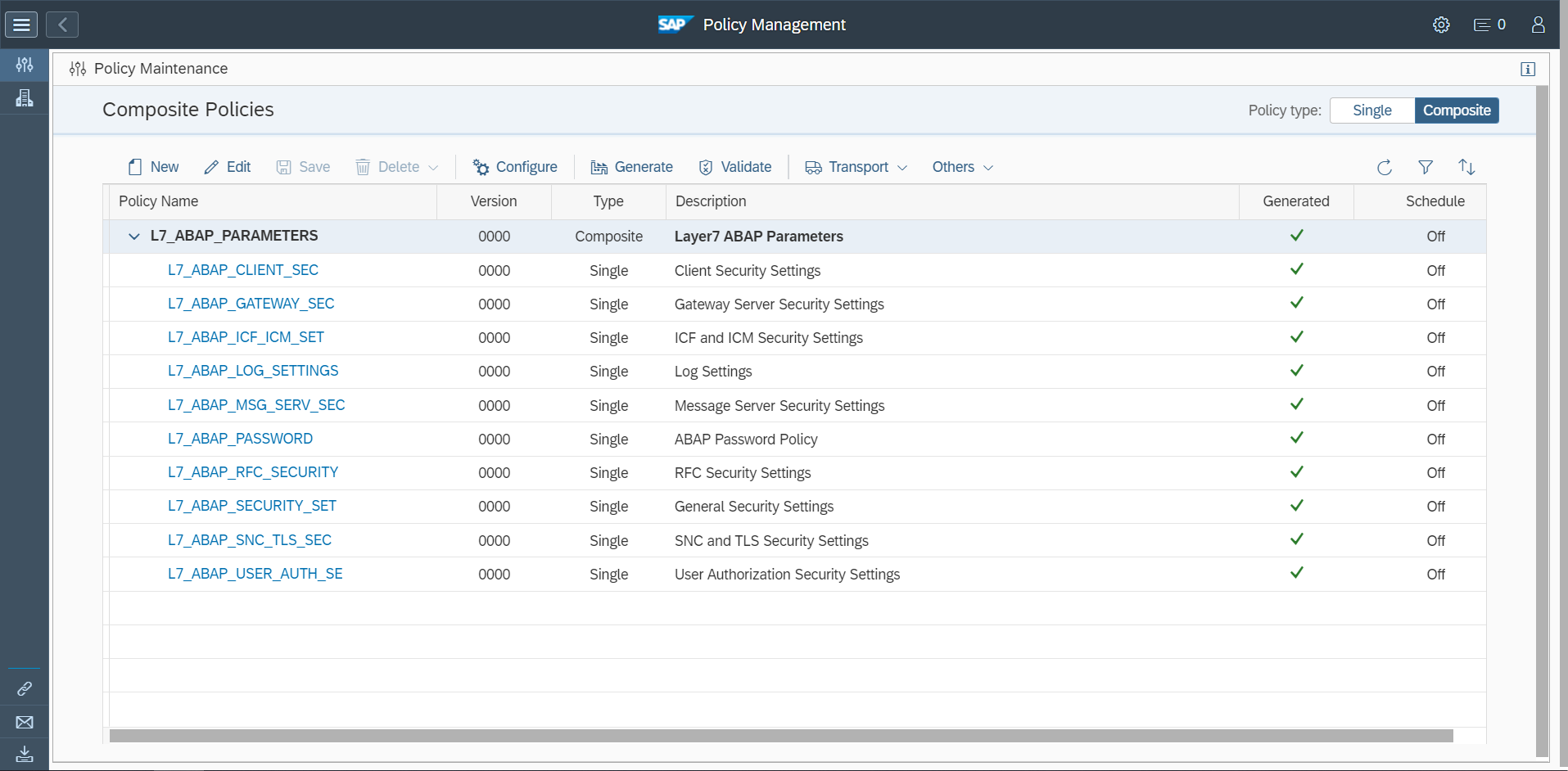
In order to apply a generated single or composite policy to audit SAP systems, you must first define the scope of systems. Systems can be grouped by Customer ID, Data Center, IT Admin Role (Environment) and other variables (see below). Customer ID can be used to group systems by company or business group.

The next step is to select and apply the required single or composite policy. The results below summarize the compliance status of systems in the L7_FRUN group against the ABAP Parameters composite policy.
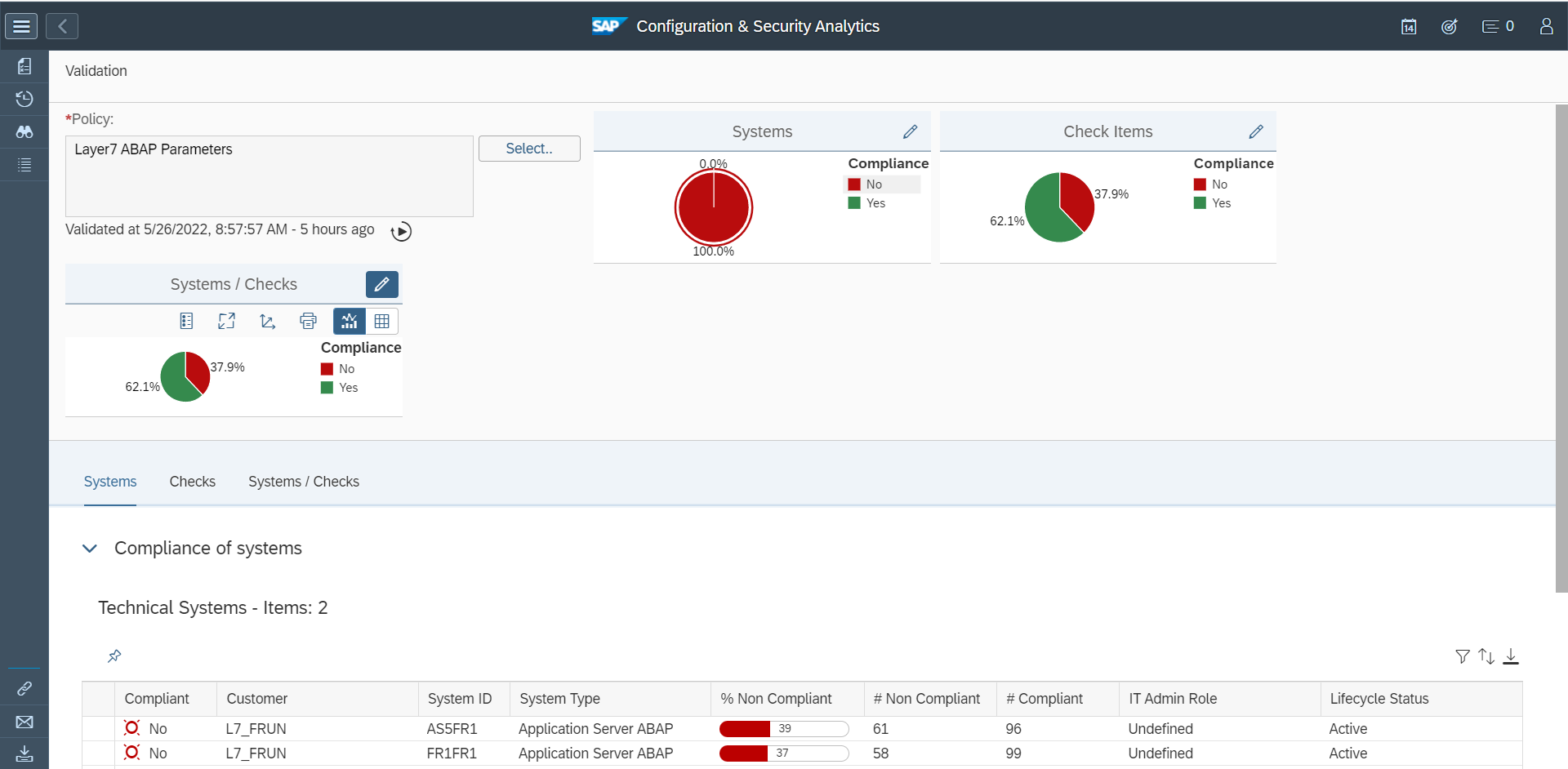
Users can drilldown into the findings for each system to focus on parameters that failed the policy check.
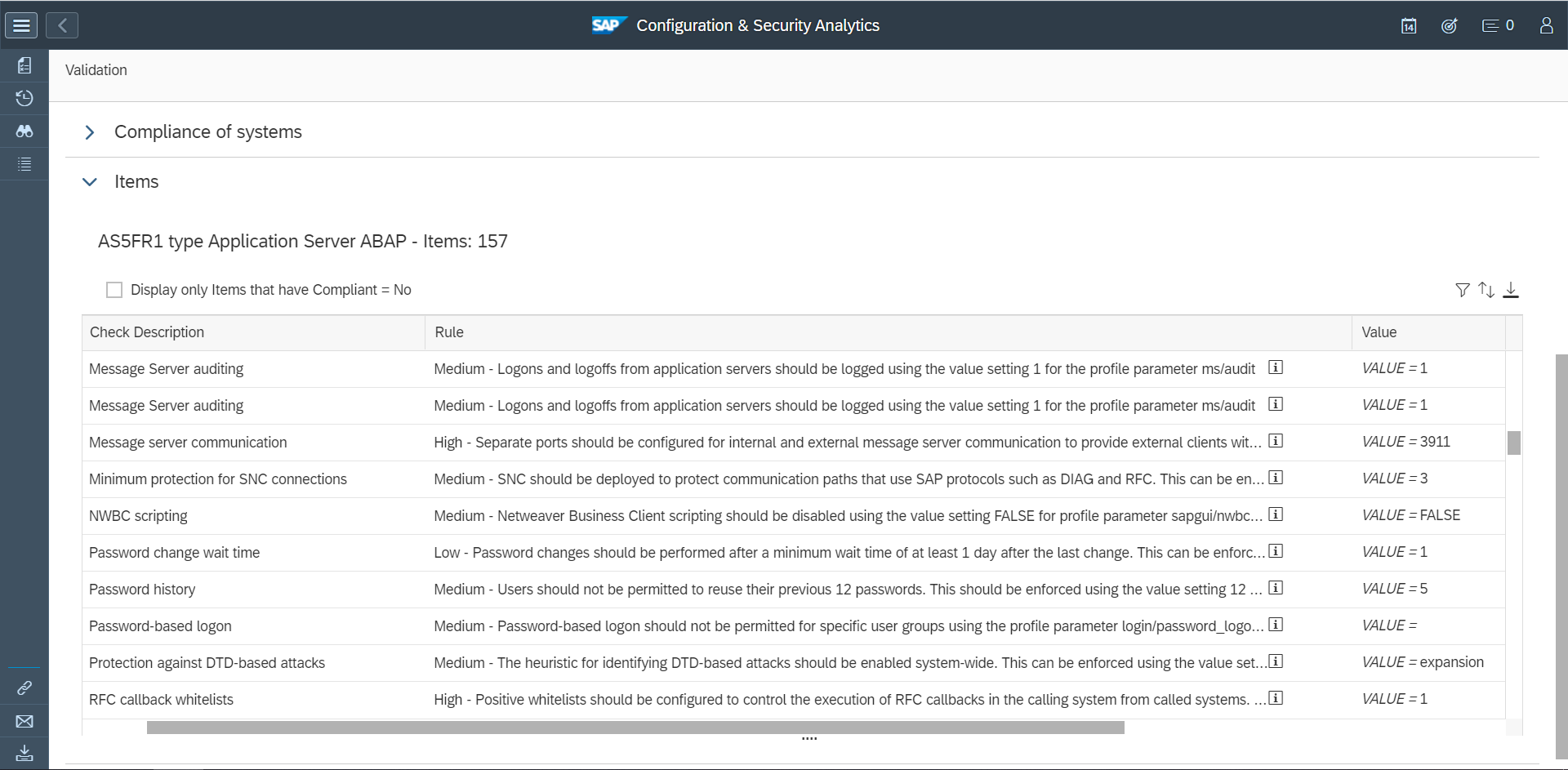
You can click on the icon at the end of each rule to view further details.

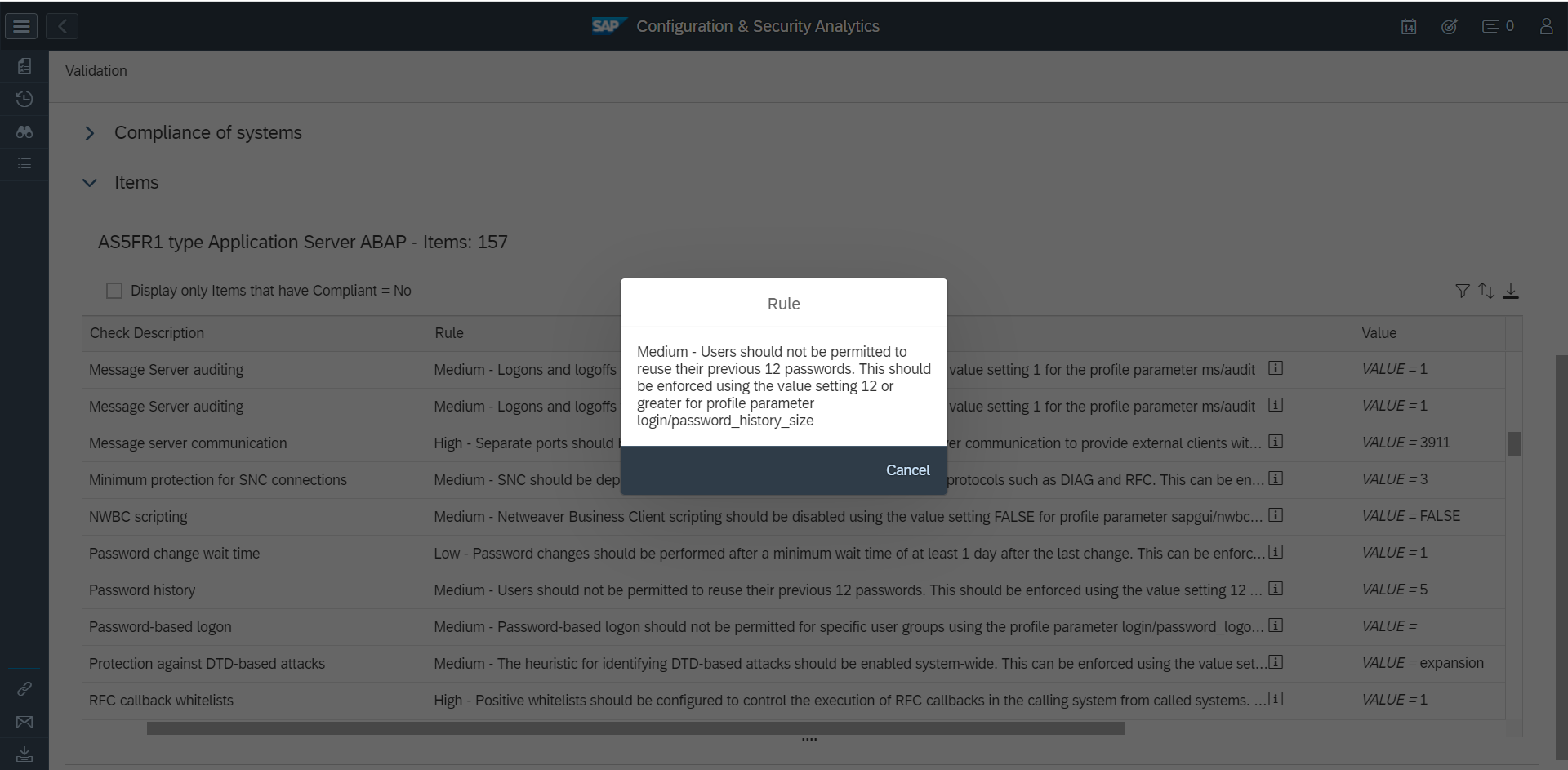
The current value of the parameter is displayed in the Value column. The results can be exported to Excel for offline analysis.

Policy checks can be scheduled for hourly, daily or weekly intervals in Policy Management.
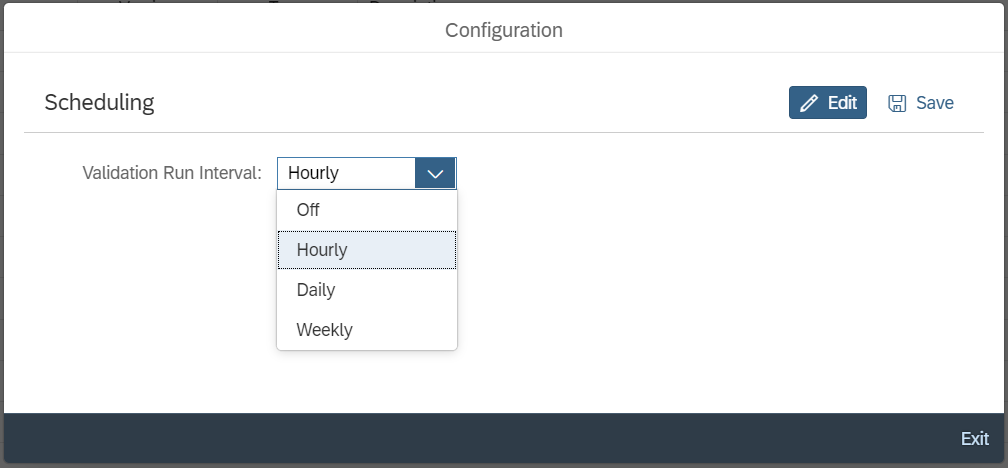

The results of the scheduled checks can be displayed in Trend Analysis. This provides a graphical analysis of compliance levels for each interval of the report.

Focused Run does not include the equivalent of System Recommendations in SAP Solution Manager for discovering and applying security notes. SAP periodically publishes policies for security notes to GitHub. The policies can be downloaded and imported into Focused Run to check for the implementation status of relevant notes in each system. This approach can lead to inconsistencies between System Recommendations and Focused Run since calculated notes may not align between the solutions. The Cybersecurity Extension for SAP Focused Run from Layer Seven Security integrates System Recommendations with Focused Run to ensure calculated notes are consistent between both platforms. The CSA policy below displays all security notes calculated by System Recommendations. The results can be filtered by system and priority. With this approach, SAP customers do not need to manually update FRUN with new policies for security notes. Calculated notes are updated automatically daily.
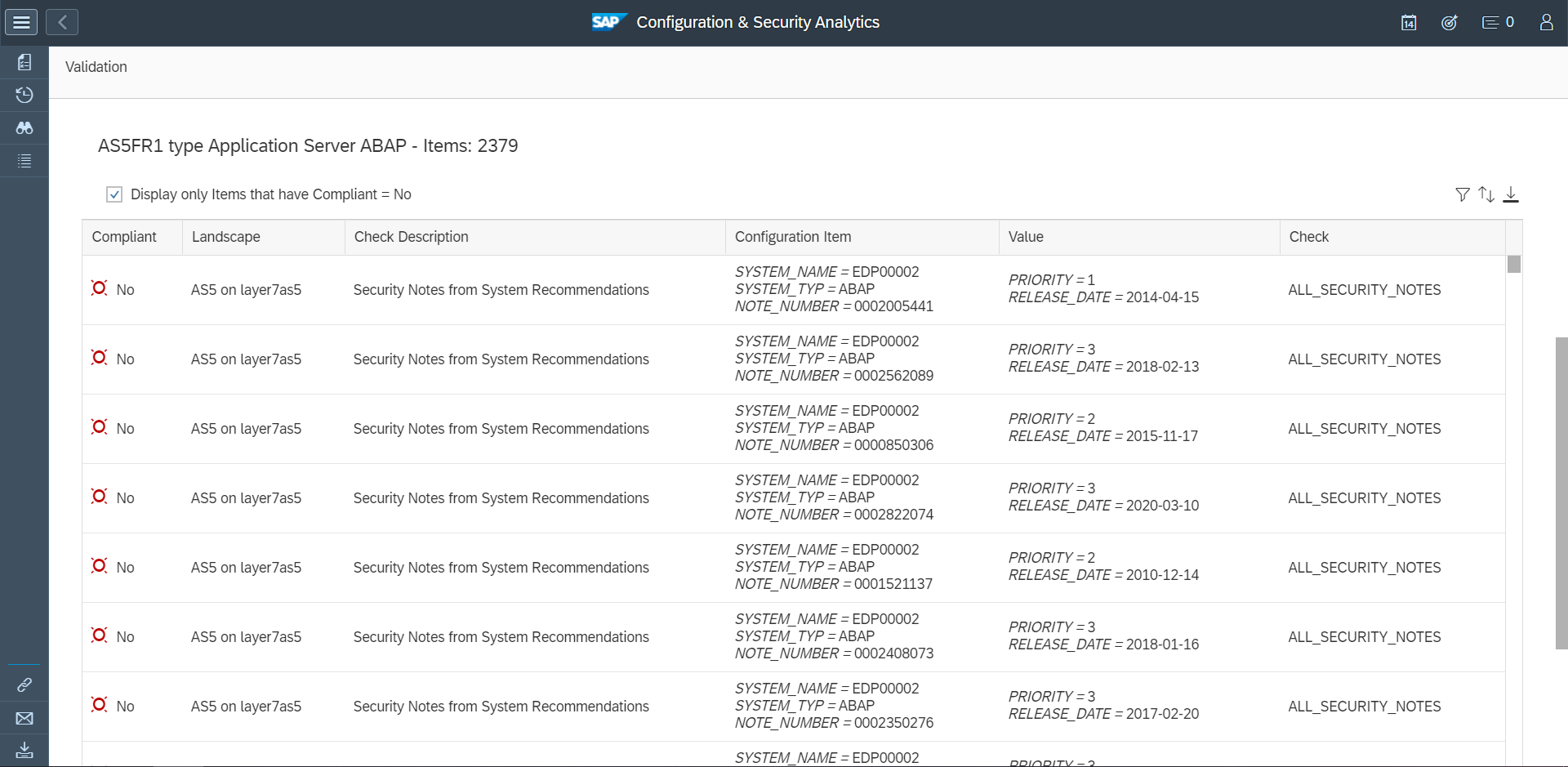
The beta release of the Cybersecurity Extension for SAP Focused Run is scheduled for Q3 2022 and will include additional config stores to supplement the security content in the CCDB, preconfigured single and composite policies for ABAP, HANA and Java systems, and monitoring templates to support alerting for SAP logs including the Security Audit Log and the HANA audit log.

